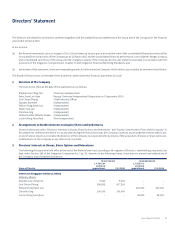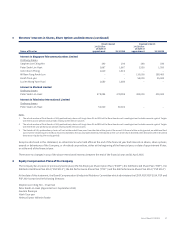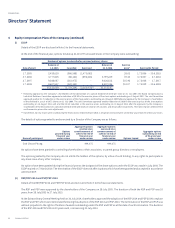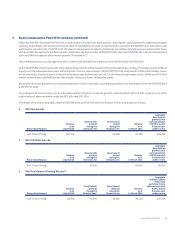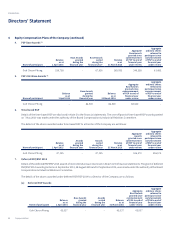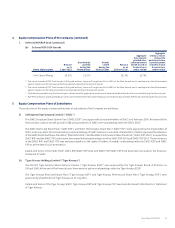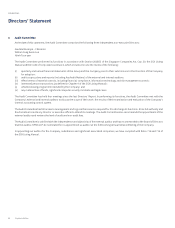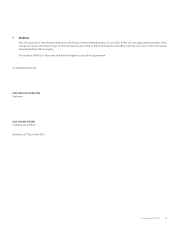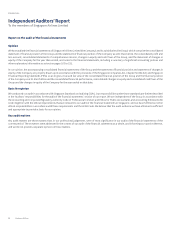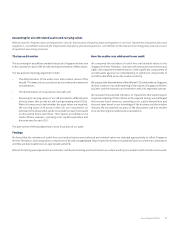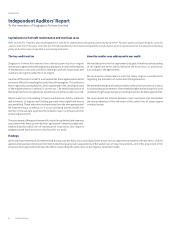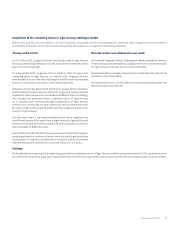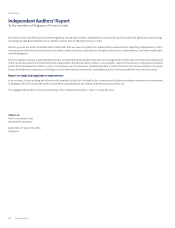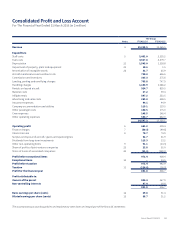Singapore Airlines 2016 Annual Report Download - page 97
Download and view the complete annual report
Please find page 97 of the 2016 Singapore Airlines annual report below. You can navigate through the pages in the report by either clicking on the pages listed below, or by using the keyword search tool below to find specific information within the annual report.Timing of recognition and accuracy of passenger revenue
Refer to note 2(aa) ‘Revenue’ and note 3(c) ‘Passenger revenue recognition’ for the relevant accounting policy and a discussion of significant
accounting estimates.
The key audit matter How the matter was addressed in our audit
Passenger revenue is deferred on the balance sheet as sales in advance of
carriage at the date of sale to the customer and is measured based on the
sales price to the customer, net of commissions, discounts and rebates.
Passenger revenue is recognised in profit when a passenger has flown.
The timing of revenue recognition for unused tickets requires judgement
due to the extended period over which the tickets may be utilised. It has
been determined that unused tickets are recognised as revenue aer two
years from the sale date based on an assessment of ticket conditions and
commercial considerations.
The determination of the amount of revenue to be recognised for each
flight includes complex internal systems and involves the exchange of
information with industry systems and partner airlines for a high volume
of transactions.
As a result of the judgement required in determining the timing for
recognition of unflown tickets and the complexity in determining the
amount of revenue to be recognised for flown flights, this is a key focus
area in our audit.
We read the contracts relating to ticket sales and applied our understanding
of these contracts in evaluating the judgements used in determining the
timing of the revenue recognition of tickets that are unused. We also tested
the application controls of the systems configured to recognise revenue
for those tickets.
To address the accuracy of the output of the passenger revenue systems,
we tested the relevant computer system controls, these being the user
access, program change controls and application controls over internal
passenger revenue systems. Our tests of these controls were designed to
ensure that these key computer systems operated as they are designed,
and are protected from tampering of data or soware logic that would
result in inaccurate accounting information relating to passenger revenue.
The selected application controls tested included those relating to the
completeness of transfers of data between systems, ticket validation to
identify data errors and the assignment of ticket prices to each flight. Key
manual controls were also tested to ensure the appropriate treatment
of exceptions and reconciliations with the outputs from shared industry
systems and partner airlines.
We also visited a key outsourced revenue processing service provider in
China and Singapore Airlines stations in London, Mumbai and Singapore to
test the eectiveness of key controls in the passenger revenue accounting
process at those locations.
Findings
Cautious estimates have been made regarding the timing of revenue recognition for tickets that are expected to remain unused aer flight date.
Regarding the accuracy of passenger revenue, no significant exceptions were noted in our testing of the IT and manual controls. Our site visits found
the key controls to be operating eectively.
Annual Report FY2015/16 95


